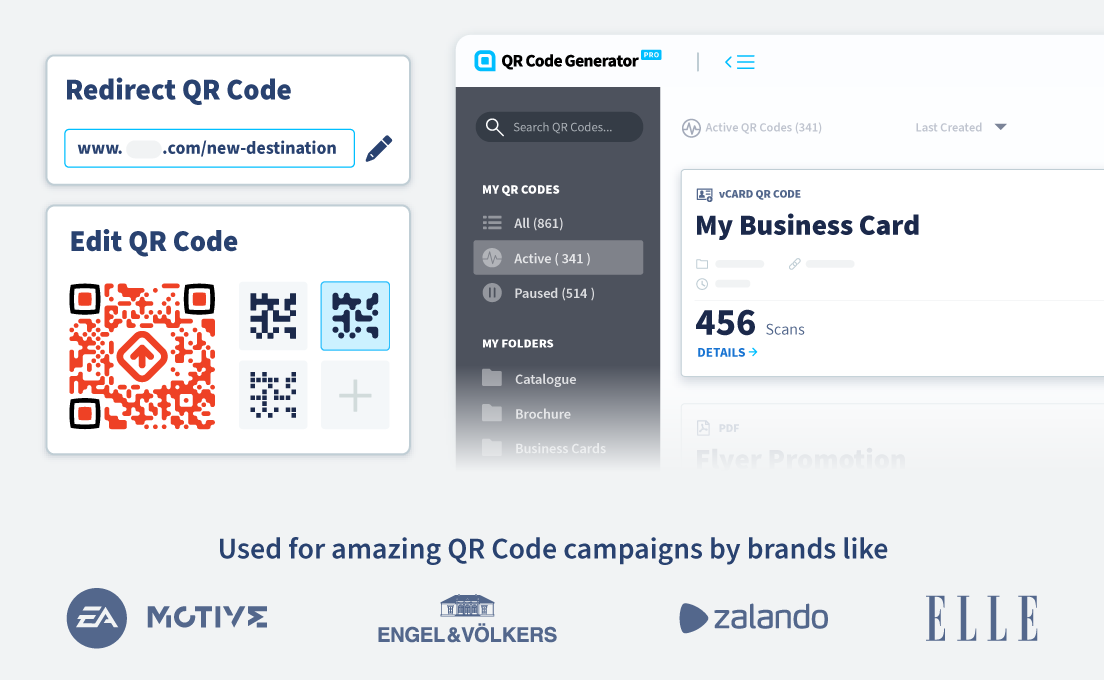- Best Practices ●
- COVID-19 ●
- Industry Trends ●
- Partners ●
- Product ●
How To Use Print Marketing Effectively: Tips, Examples, and More
Digital marketing’s growth lifted off years ago with the advent of search engines and social media. But instead of slowing down as it reached stratospheric levels, that growth ballooned at lightspeed.
It seemed like the COVID-19 pandemic would make print marketing obsolete as more people started relying on digital tools to do everything from socializing to visiting the doctor. Then, as always, print marketing evolved through innovations like QR Code menus and became more important than ever before.
Ready to see what print marketing can do for your company? Read on for a comprehensive guide to planning your next print marketing campaign!
What is print marketing?
Print advertising may seem more straightforward than creating digital media or pay-per-click online ads, but the truth is that it’s just as diverse and complex.
Print media is all printed marketing materials, such as newspapers, magazines, direct mail, and billboards, that advertise a product or service.
In a digital world built on social media, search engines, and online shopping carts, print marketing may seem outdated. However, print marketing is still an important, though sometimes more challenging, part of connecting your target audience to your product.
Many marketers have discovered the benefits QR Codes and other digital tools deliver when added to print media. By combining elements of both digital and print marketing, businesses can develop a more holistic approach to advertising.
For example, when it comes to digital marketing efforts, you can use dynamic ads to easily adapt your marketing to different audiences. But, reaching customers through print media forces you to consider their literal journey to your product in the real world.
Building that target customer profile takes more initial investment, but it can give you a deeper understanding of your customers, which can earn you a fantastic return on investment.
Benefits of using print marketing for your business
Even if most people don’t realize it, they see print media signage just about every time they leave home—whether it’s an in-store ad or a billboard on the way to the store. And the industry shows no signs of slowing down. In fact, the global print advertising market is expected to reach nearly $35 billion by 2027.
But that’s not the only benefit of using print marketing materials. Let’s explore some other important benefits of print marketing.
More tangible, memorable touchpoints
Marketers plan digital media around digital touchpoints that make up a customer’s journey to a product. On the other hand, print advertising, like business cards and direct mail, has literal touchpoints. Their tangible, tactile nature engages more senses, making them more memorable to your potential customers.
Higher retention rates
Another clear benefit of print marketing media is that it’s easier to hold on to and revisit. Sure, you can save digital media and revisit it once you get back online. But if you save a booklet or brochure and leave it in your car or on your kitchen table, then you’ll see it several times a day without taking any extra action.
More opportunities to reach your audience
Despite how widespread digital ads and marketing materials are, many potential customers still don’t consistently access digital media. That could be because they’re one of the 42 million Americans who don’t have reliable access to broadband, or they simply prefer traditional print media.
Although that’s far from a majority, it’s still a large number of people who you can only build brand recognition with through print media.
Easy to integrate with digital marketing campaigns
Reaching customers through eye-catching print marketing campaigns that drive engagement online has never been easier. Think of QR Codes as an example. Not only are they easy to share and access with a smartphone, but they’re also easy to make with a QR Code generator.
Less competition in print
Finally, think of how many digital ads you scroll past or close out of when they pop up on your screen on an average day. Your target customer is likely already so desensitized to digital ads that it takes extra work just for recognition, much less to make a lasting impression.
As more and more companies focus solely on the digital world, the competition in the print world thins out, making it easier to stand out.
Creating a successful print marketing strategy
The best print marketing strategy will depend on your industry, your resources, and how effectively you integrate your print media with your digital media. However, the general roadmap below should give a solid structure that you can build out to match your specific needs.
Set up your marketing objectives
First, you’ll need to decide what, specifically, you want to accomplish before you set out on your print marketing campaign. Simply saying you want a good return on your investment isn’t specific enough because your goals define which print marketing materials and marketing strategies are right for you.
For example, if brand awareness is your primary goal, then high-quality representations of your brand in front of your target audiences are your main means to reach it. Think billboards, in-store signage, and trade-show appearances that share your unique selling point.
On the other hand, if your goal is higher sales, then a high-quality mailer campaign with a strong call-to-action (CTA) that drives customers online to buy your product is the path for you.
Learn about your target audience
Search engines and social media platforms drive online ads towards potential customers. Therefore, it’s essential to understand what they do, why they do it, and how to present your product in the process.
It could be as simple as understanding what parts of a city or country your target demographic is most likely to live in. It could also be something more complex, like learning exactly when your target customers are most likely to be shopping for your product and timing your campaign accordingly.
Either way, you’ll need to learn who, exactly, your target audience is and how they think and act before you can reach them through print marketing.
Determine your print marketing budget
Next, decide how much budget you have available for print advertising. But don’t think of that number only in terms of the cost of printing materials and ad space. Be sure to also consider the costs of creating the right design, and the cost of distribution.
Choose the right print advertising materials
Now it’s time to choose the medium for your marketing materials. Fliers and brochures with well-written copy, strong calls-to-action, and attractive designs and fonts are great ways to drive people to an event you’re putting on.
On the other hand, billboards are an excellent way to target a demographic that frequents a specific area—and it’s a great time for them. Today, 49% of people recognize more billboards outside than they did before.
Direct mail is another medium that can use customer data and demographic information to create a powerful selling point that specifically appeals to that customer.
Design with the impact in mind
Just like with digital, space in print media is precious, so each word, image, and design element must be polished and impactful if you want effective campaigns.
If you want to build brand awareness, then consistency in your tone, design, and message is incredibly important. You want people to quickly recognize and respond to your marketing materials, so make them memorable, engaging, and on-brand.
Incorporate a strong CTA to blend with digital elements
Even in a print campaign, most of your CTAs will lead people to either finish their purchase or request more information online. Make sure that your print media delivers an easy way for potential customers to find the next steps online so that there aren’t any roadblocks on their journey.
Track and measure your marketing efforts
Another benefit of blending your print campaigns with digital marketing is that it allows you to collect data on how people respond to your print media.
For example, every time someone scans your QR Code, it’s an opportunity to collect data on where they found your print media and what they do once they reach your digital media. That’s far from the only reason why you should use QR Codes, though!
Blend print marketing efforts with QR Codes for maximum impact
If you want to have well-rounded marketing efforts, then you can’t neglect print media. If you do, then you’ll separate your brand from millions of potential customers, as well as endless opportunities for memorable, tangible brand interactions that lead to conversions and brand growth in the digital space.
Fortunately, tools like QR Code Generator PRO make it easy to link print and digital media and track all your marketing efforts—online or off!
Sign up today to see what custom QR Codes can do for your business!






 Add custom colors, logos and frames.
Add custom colors, logos and frames.
